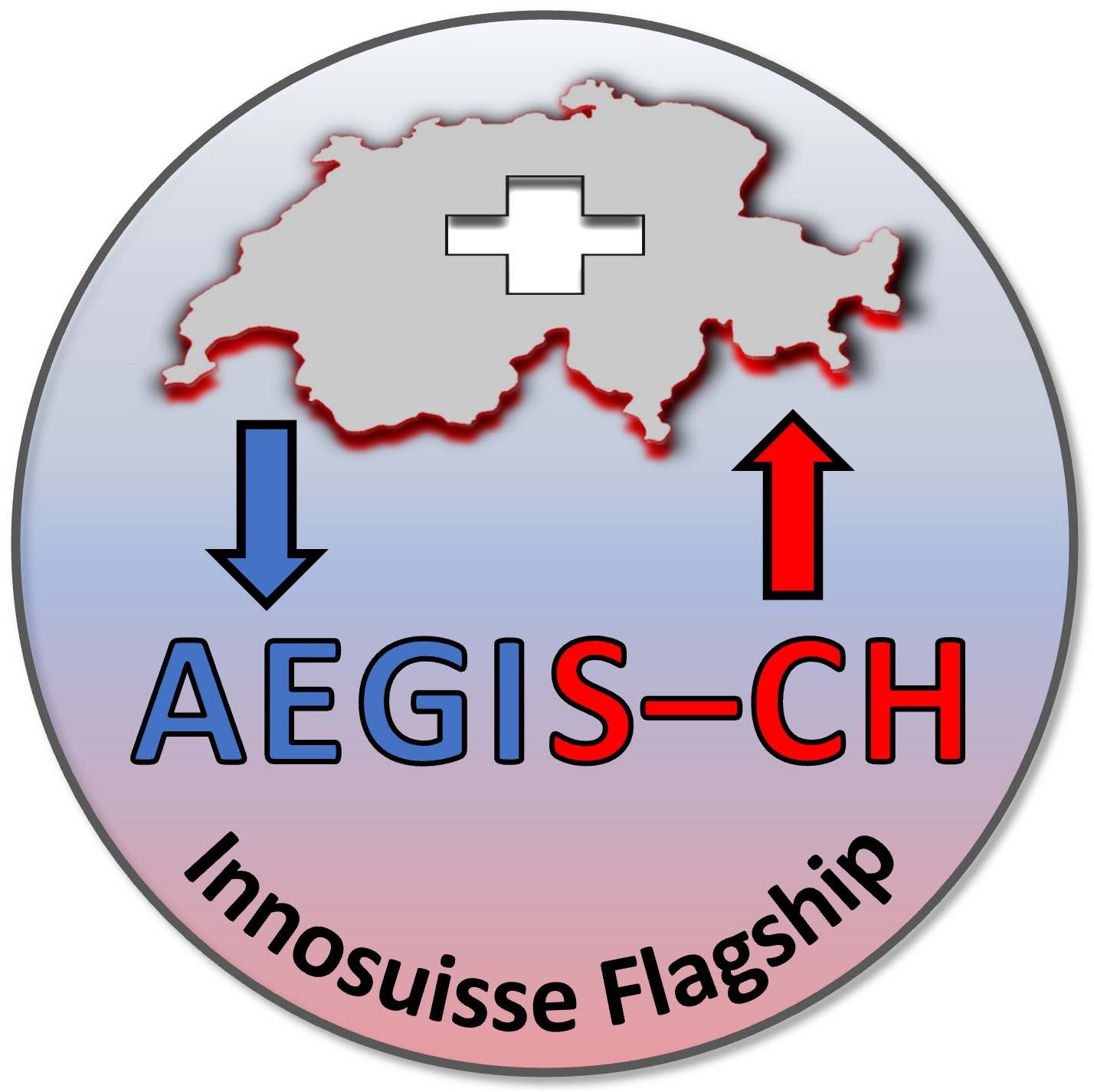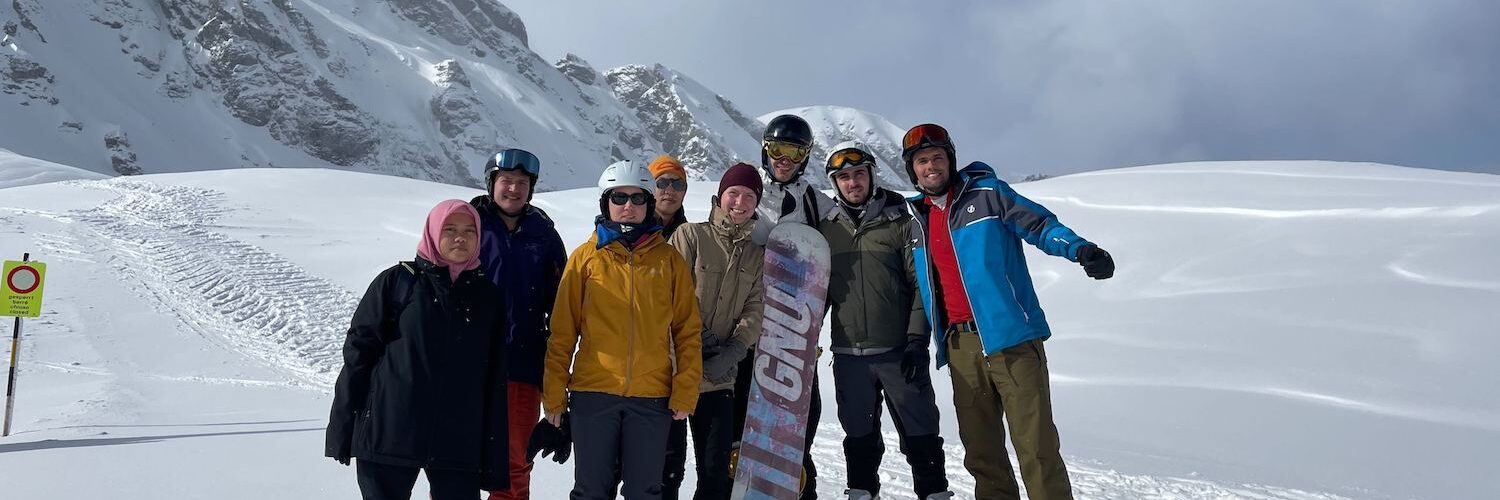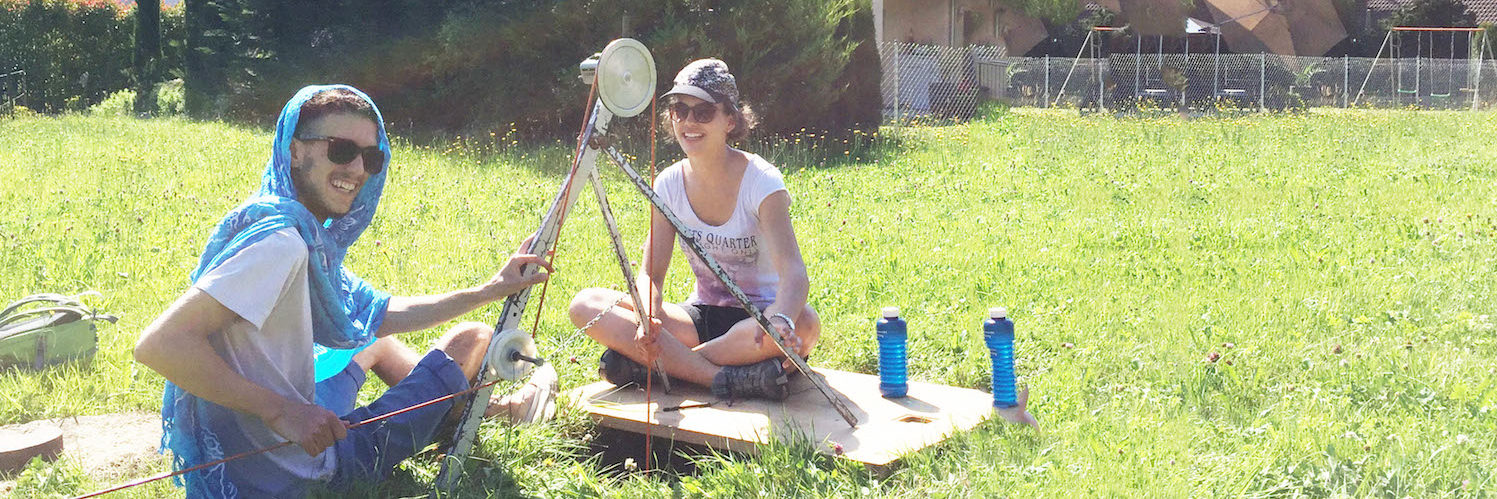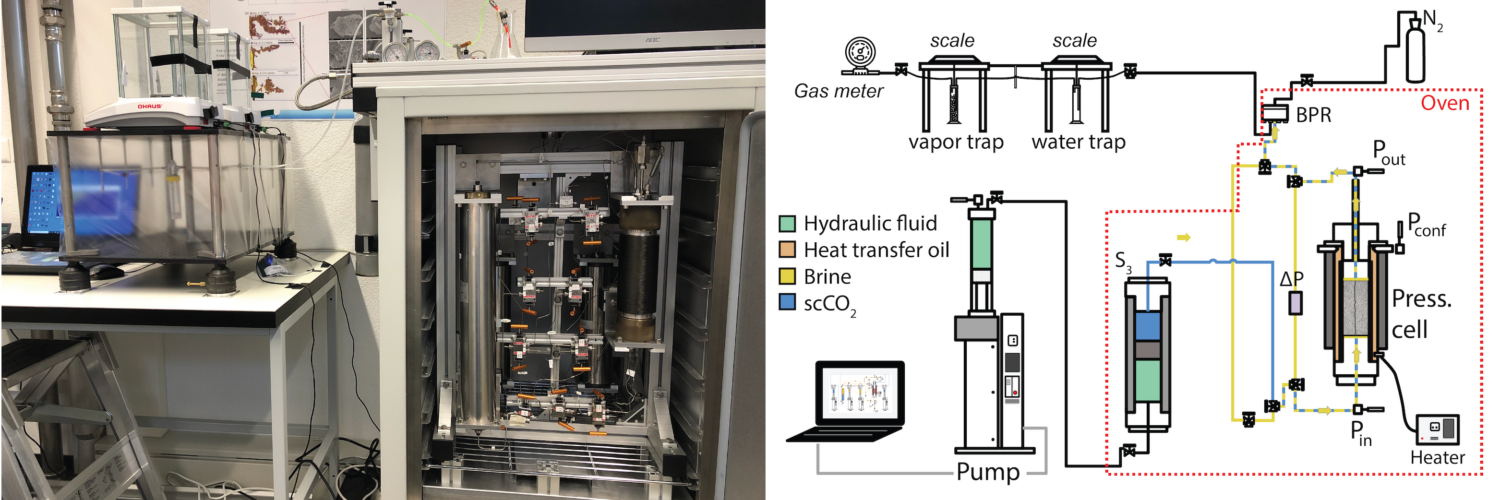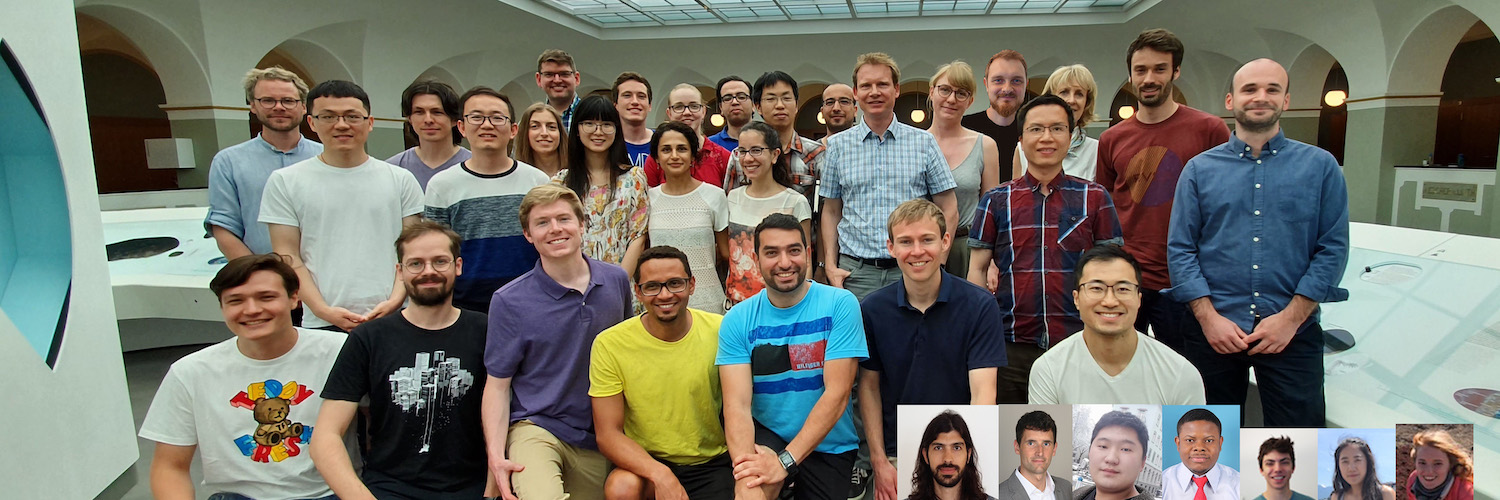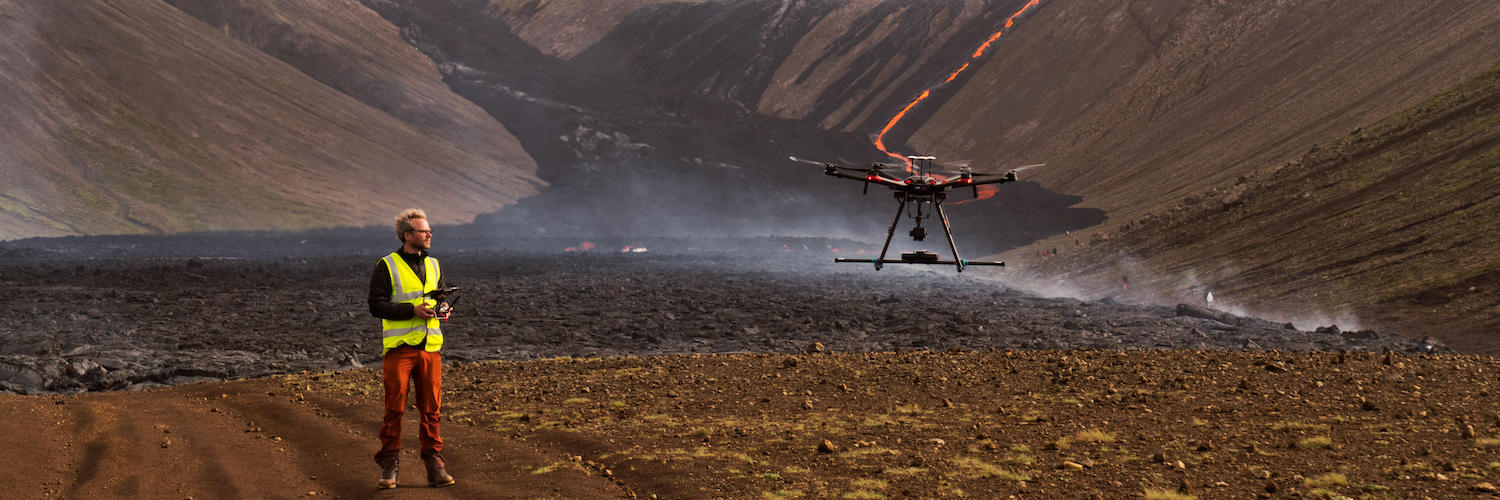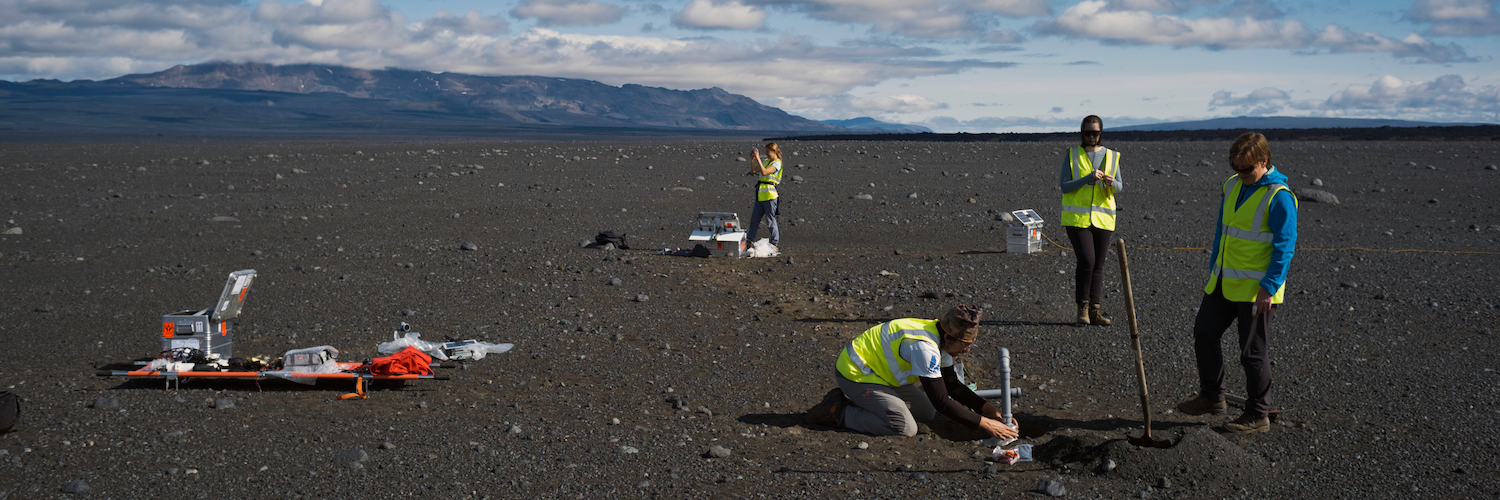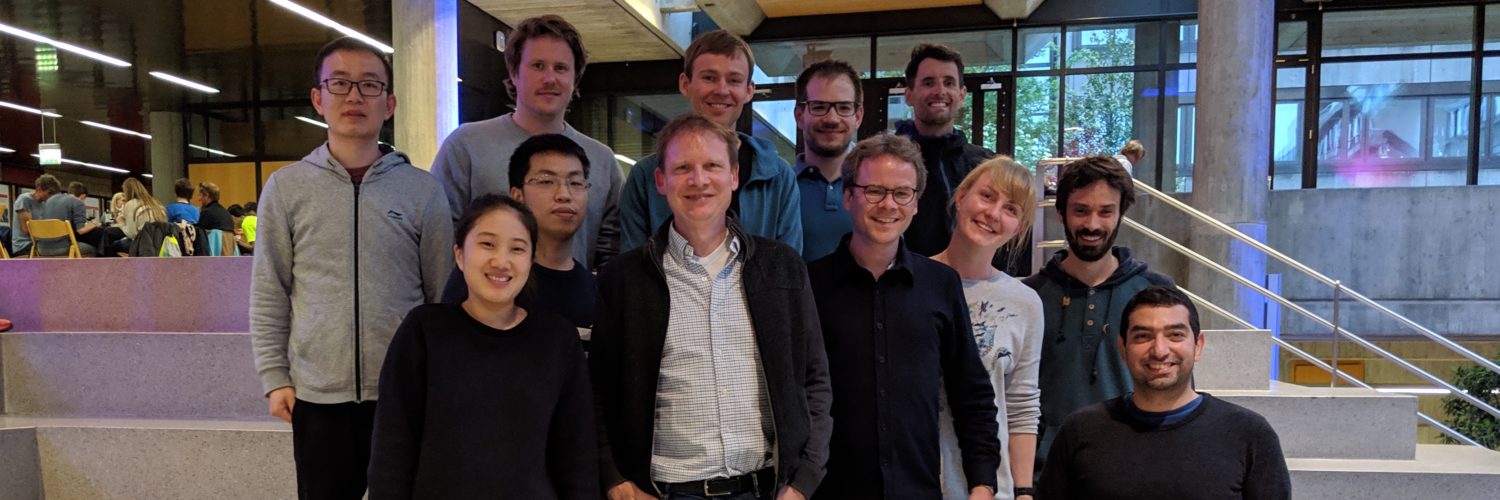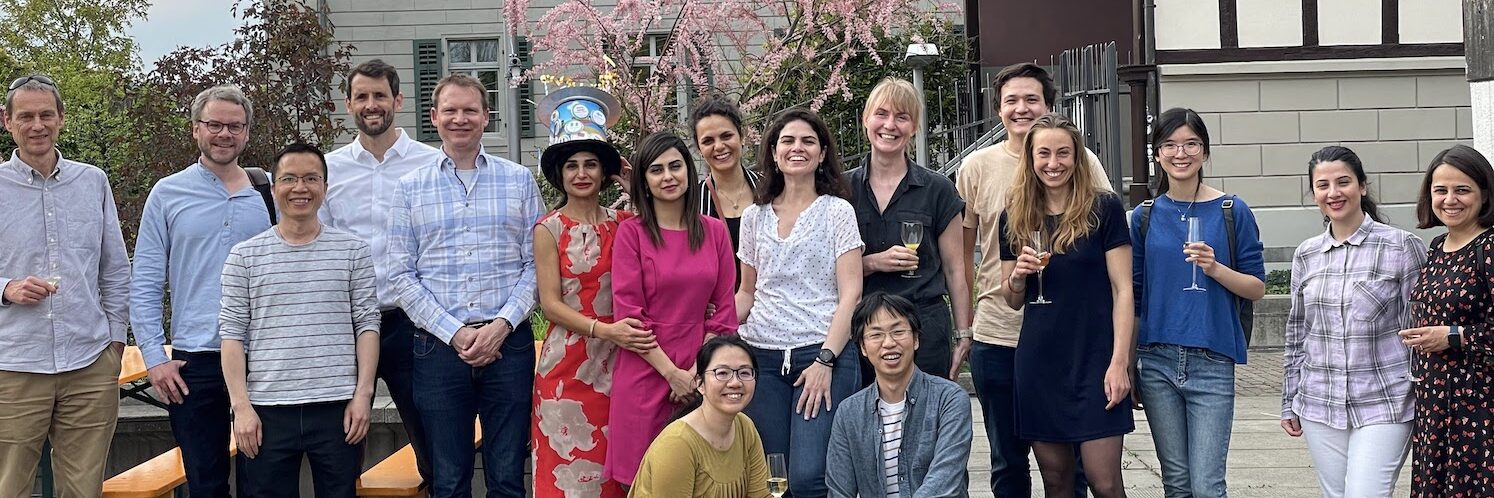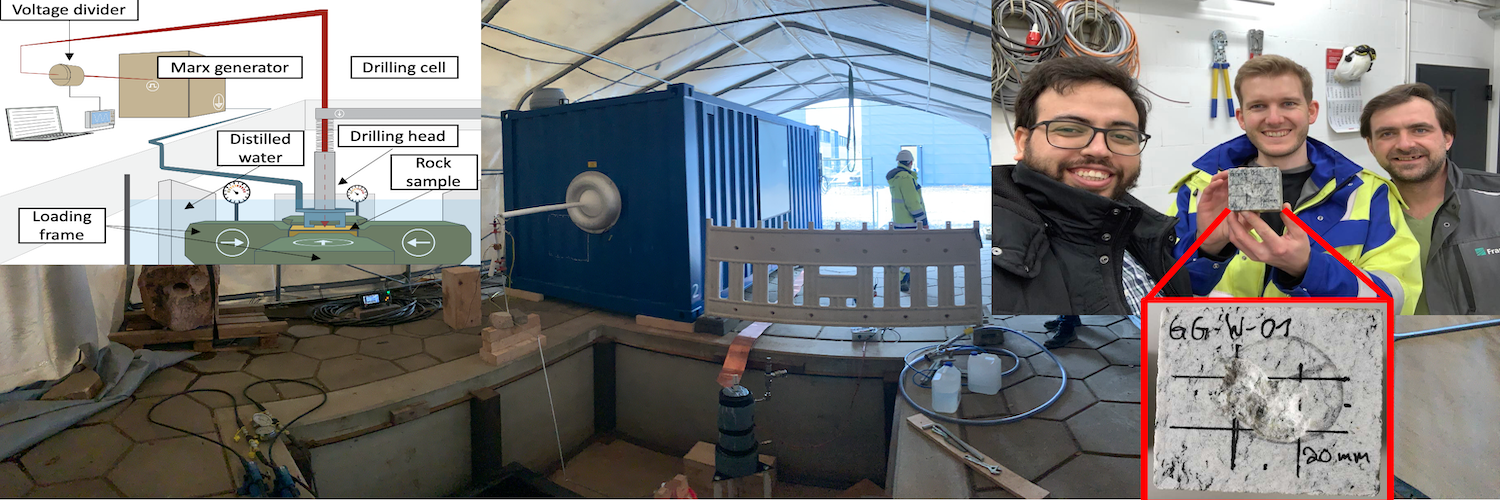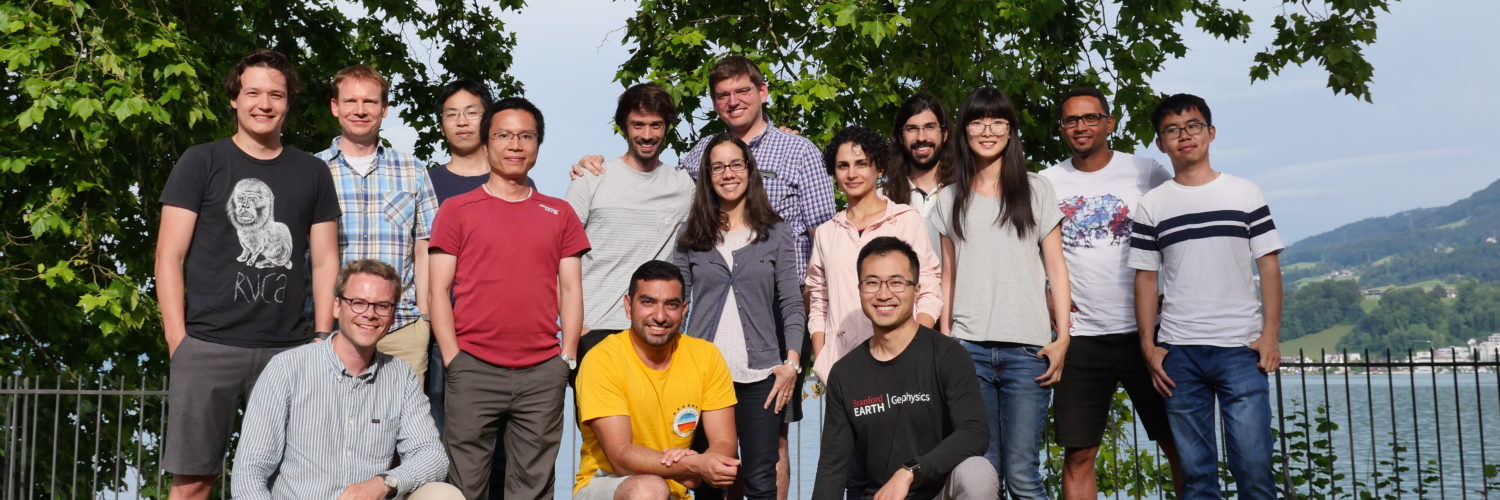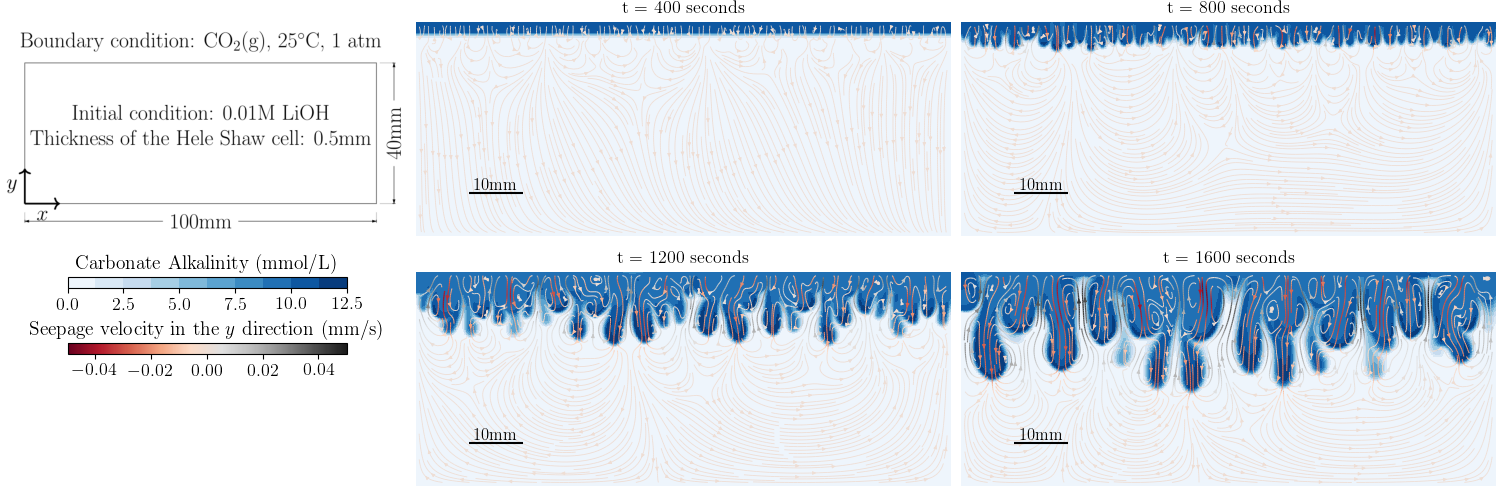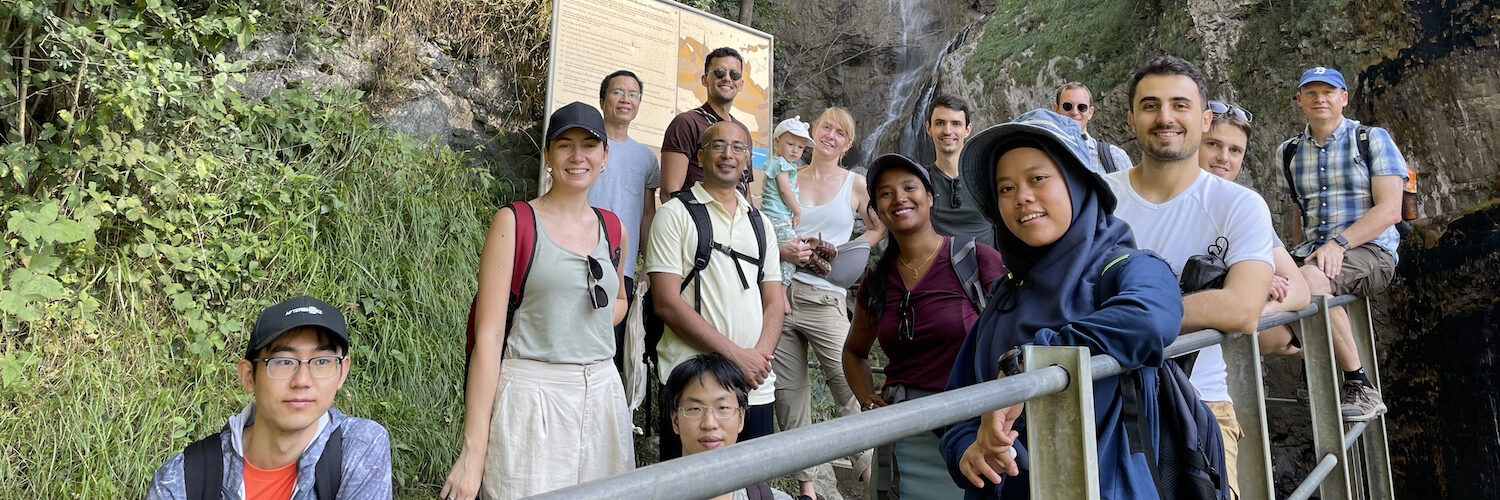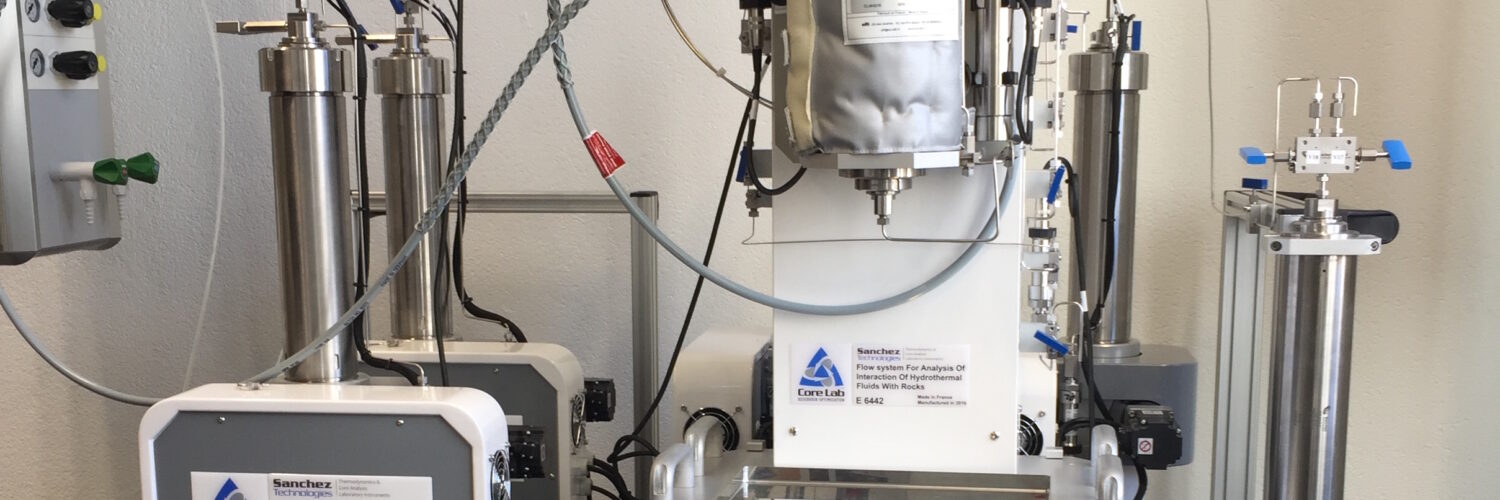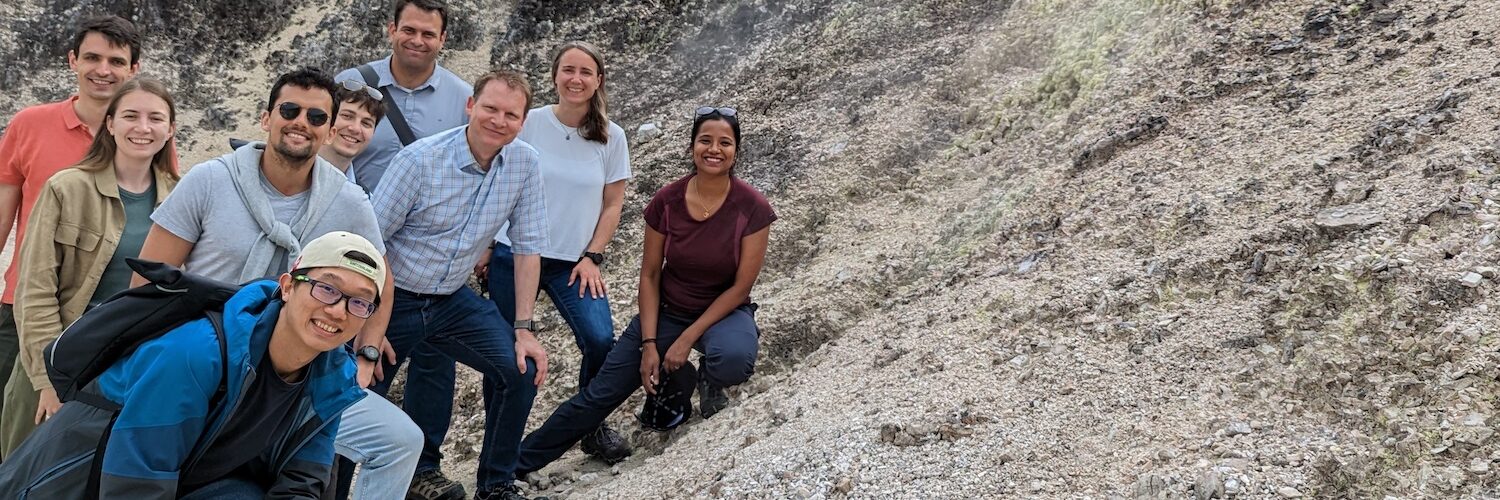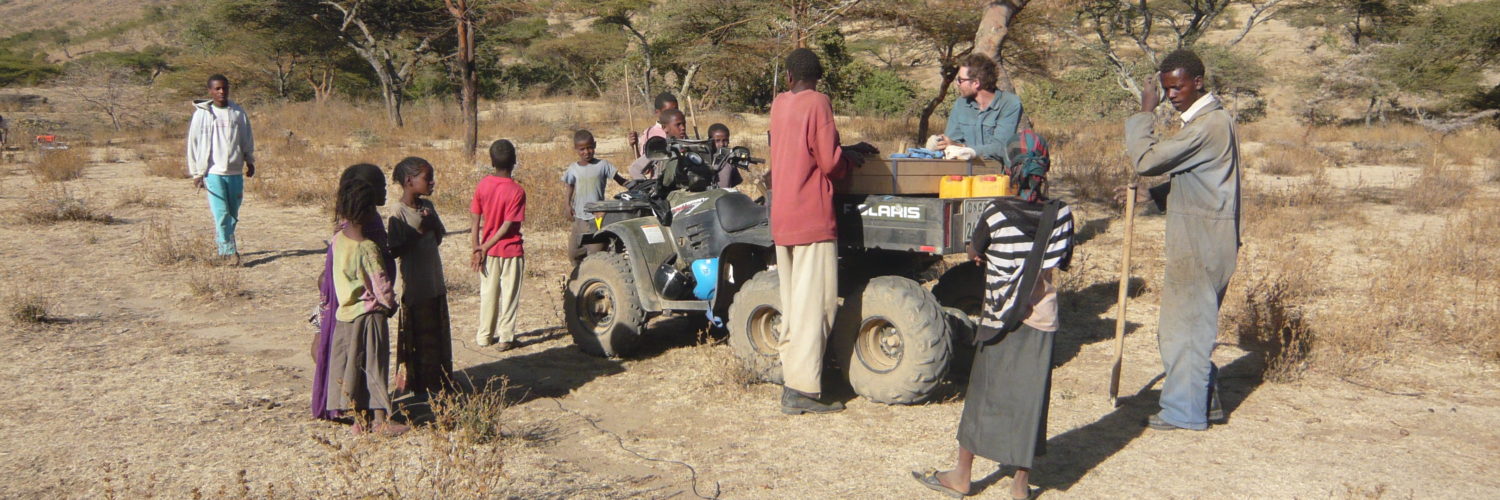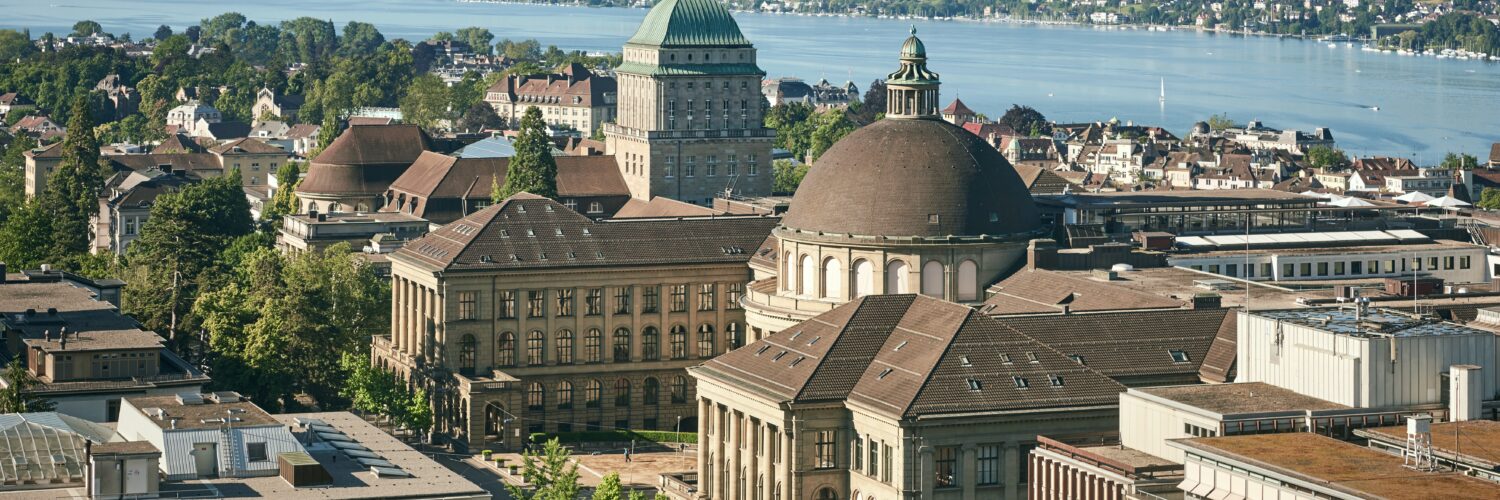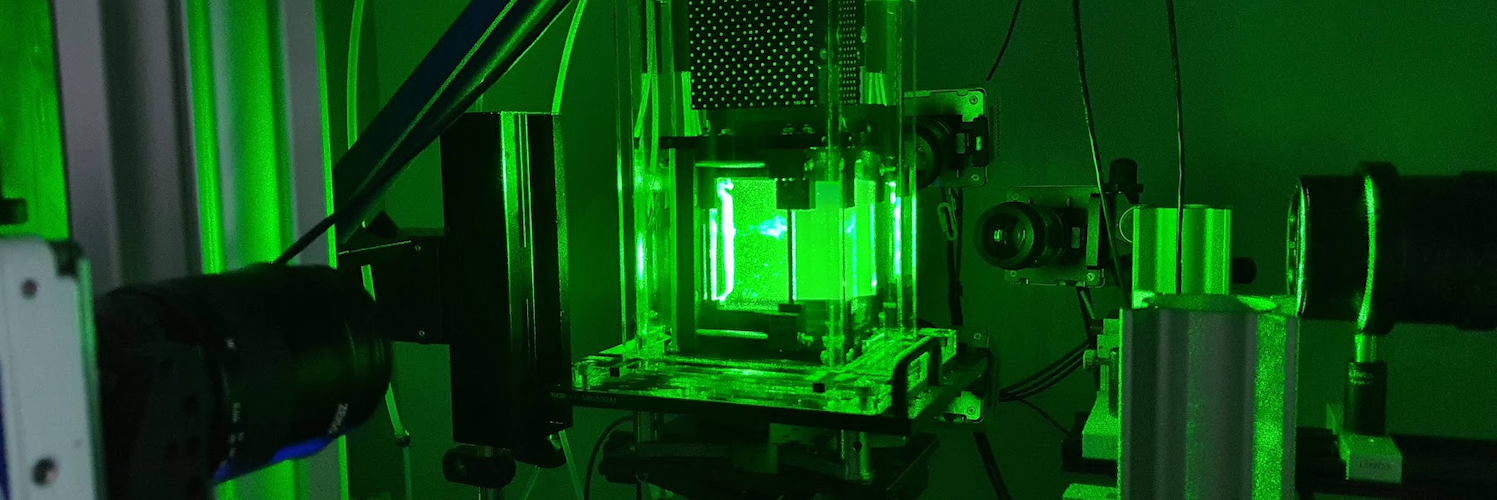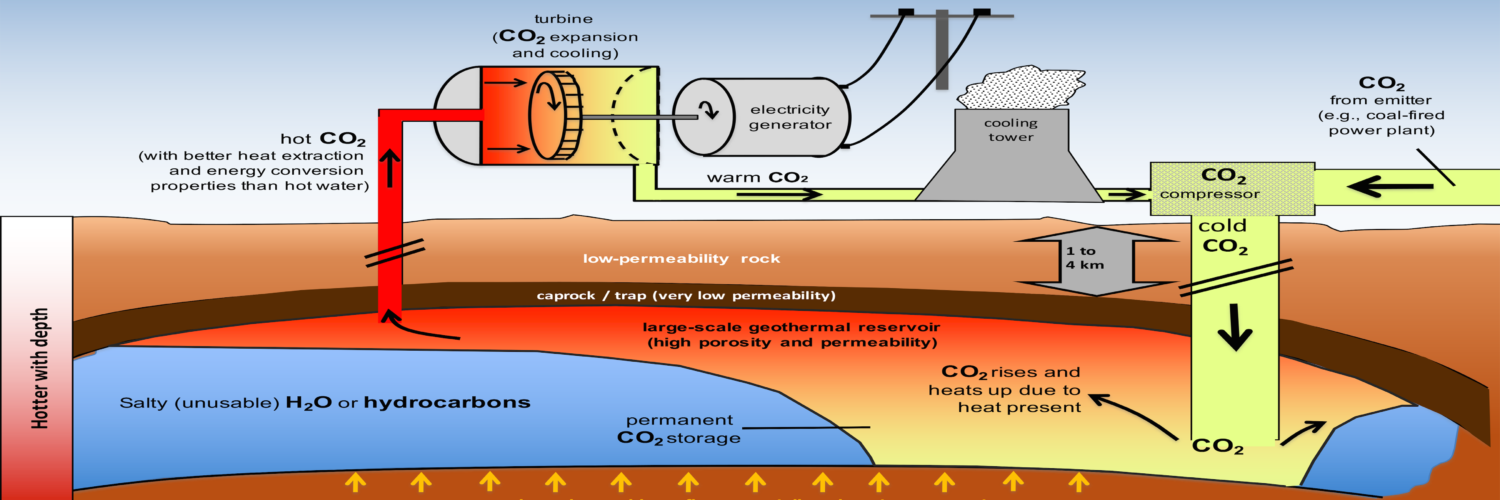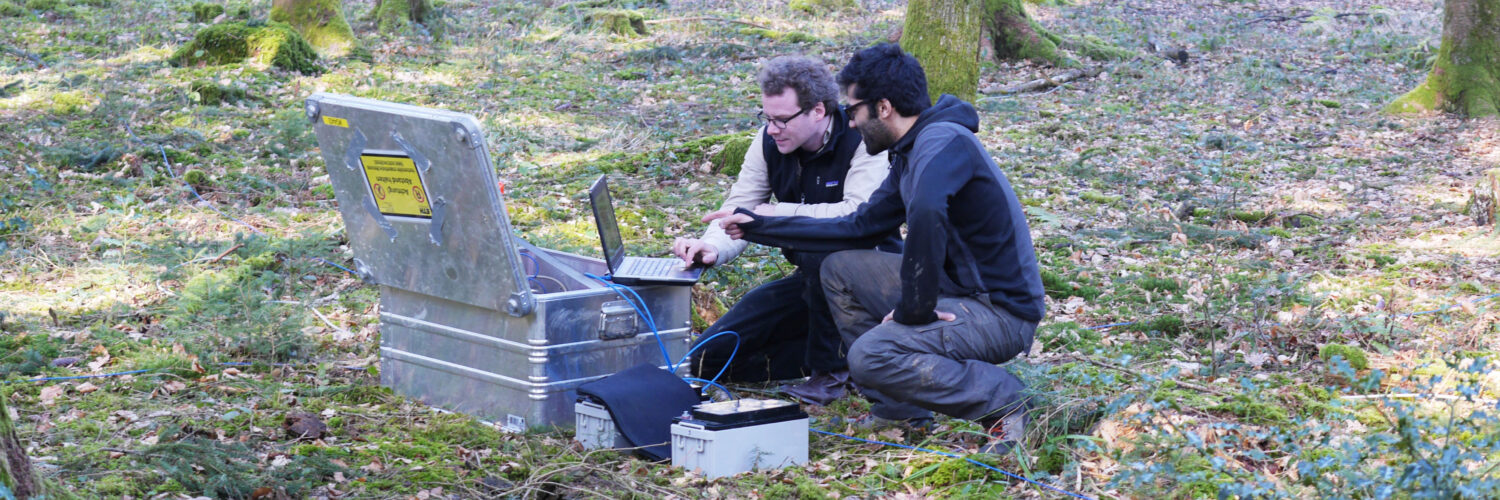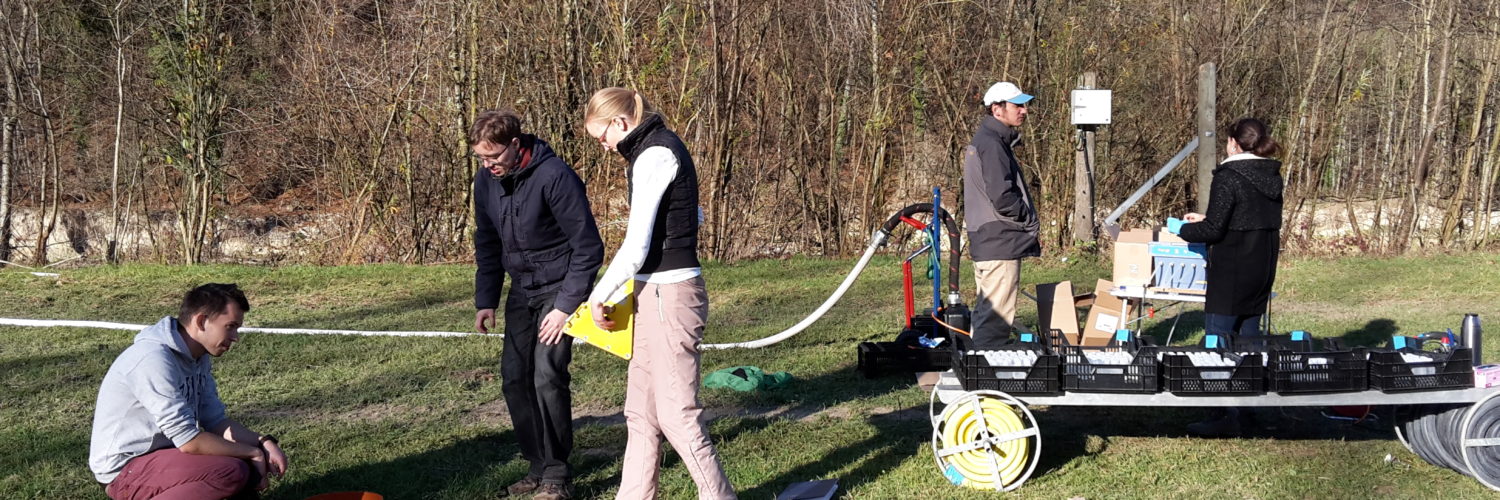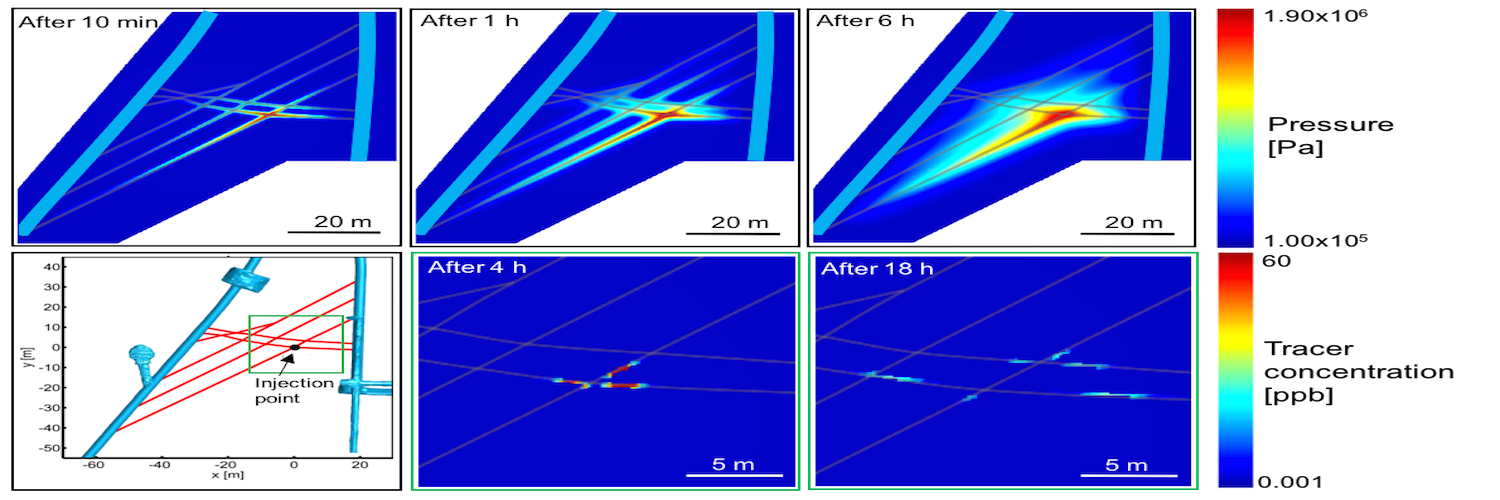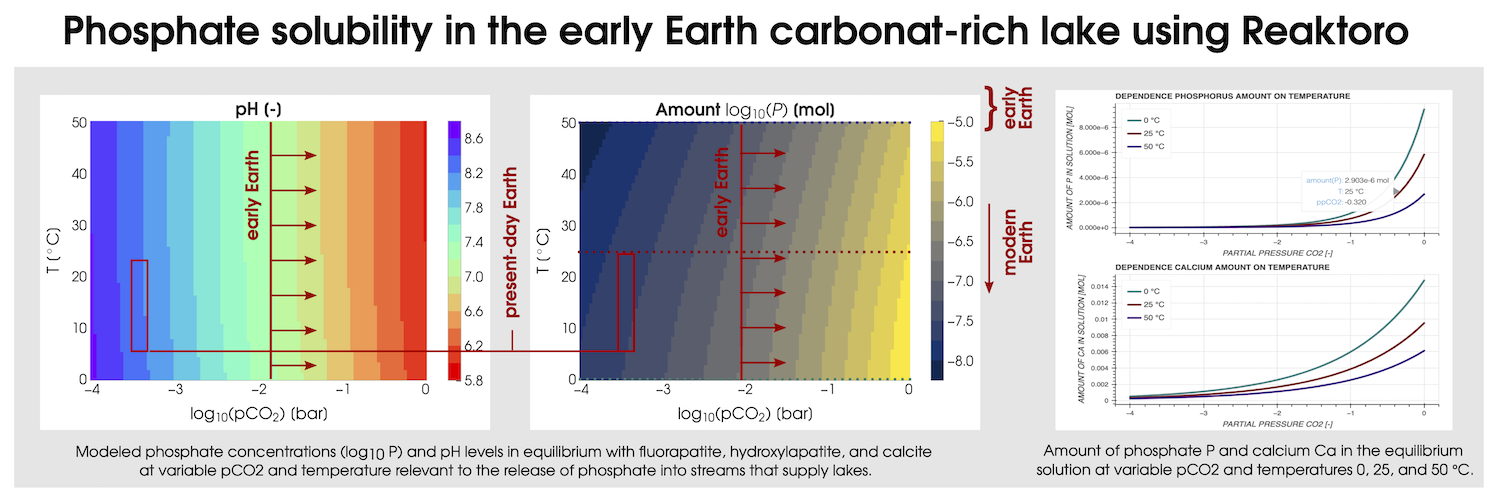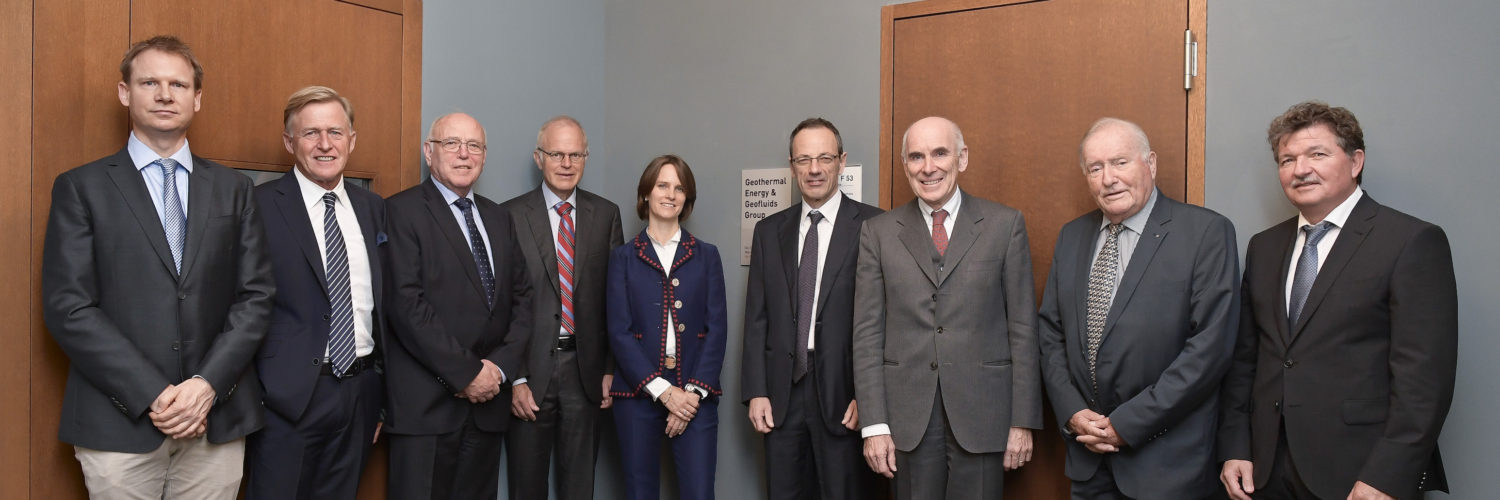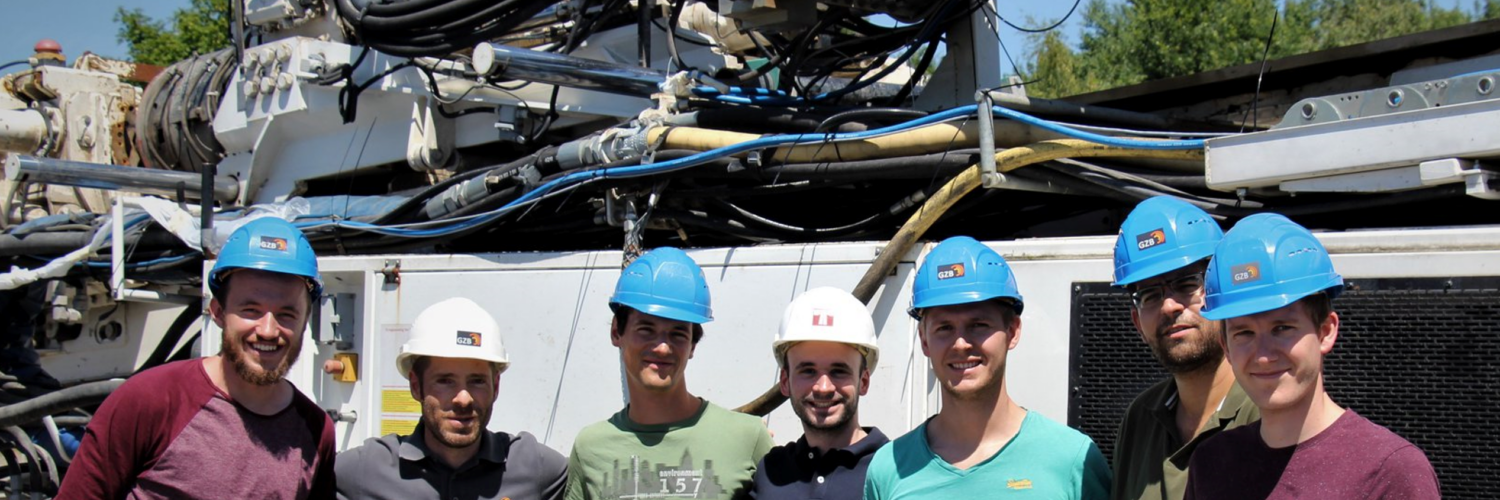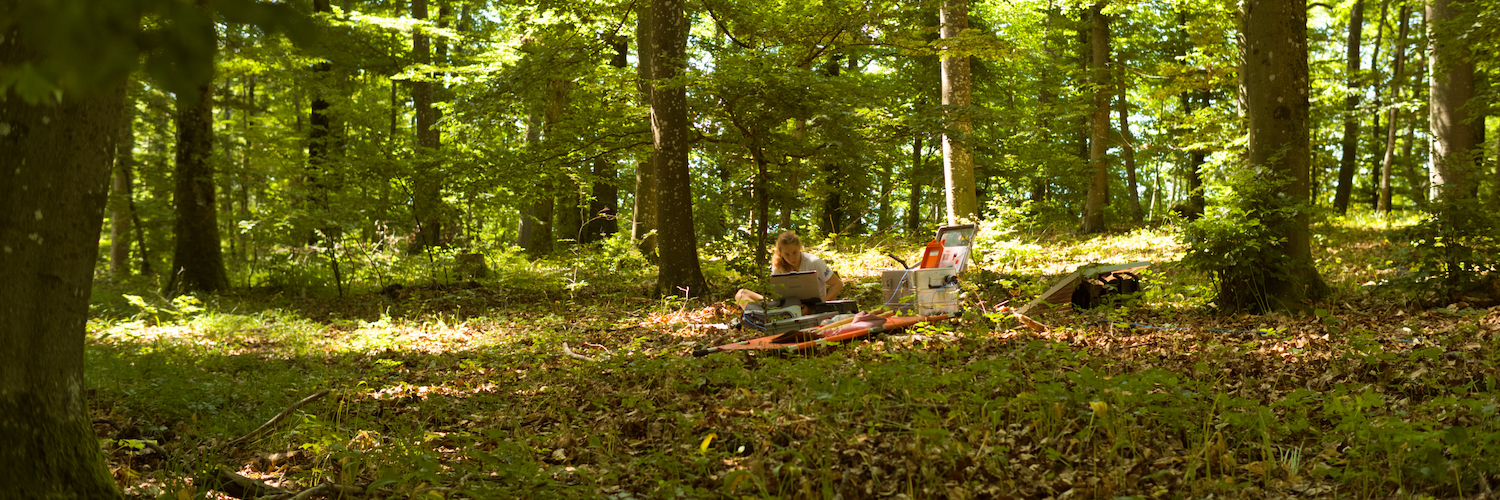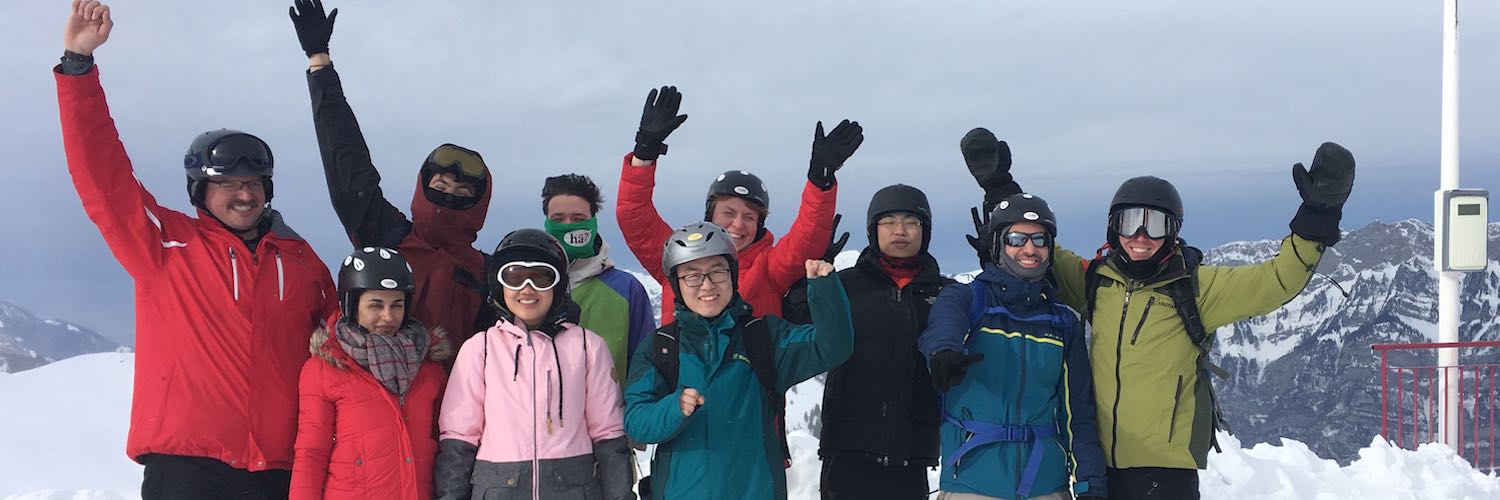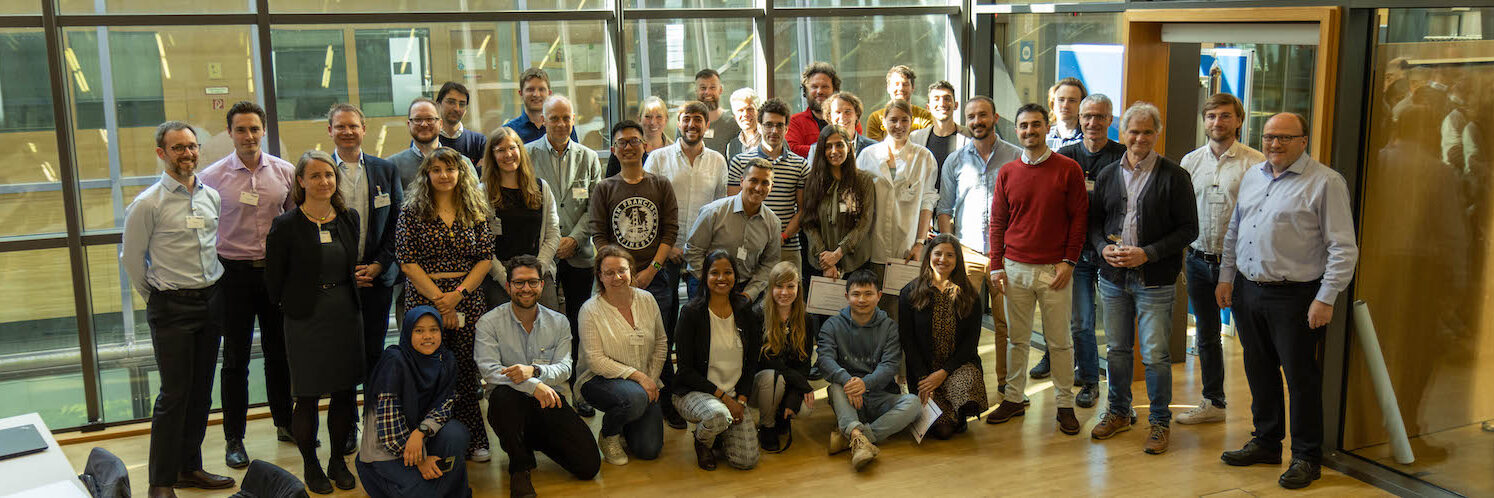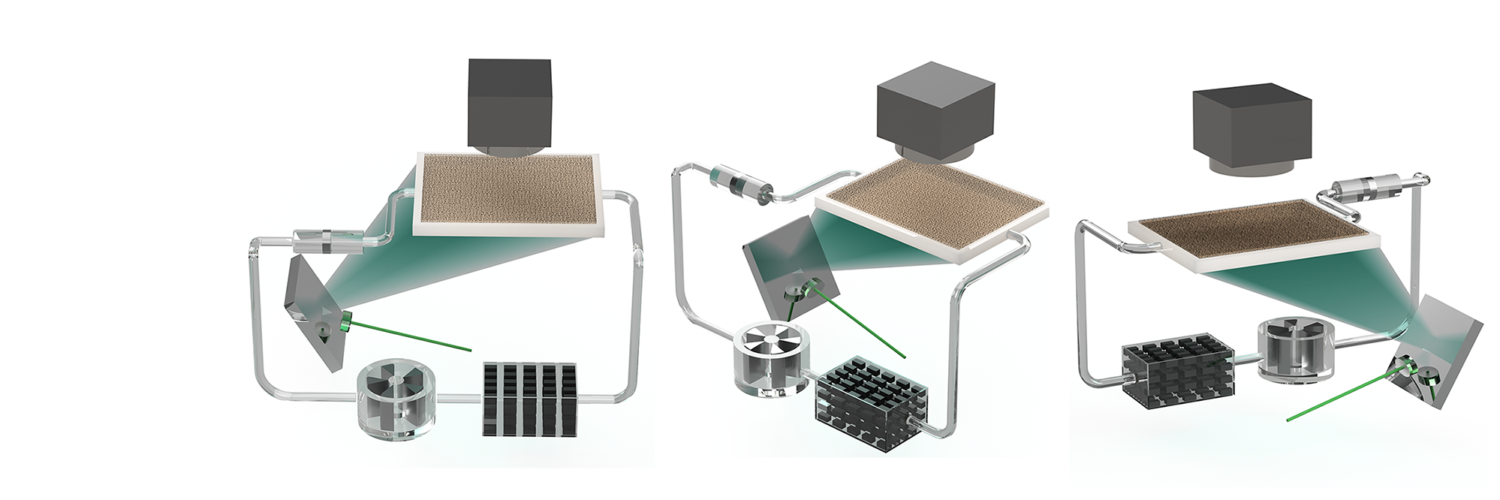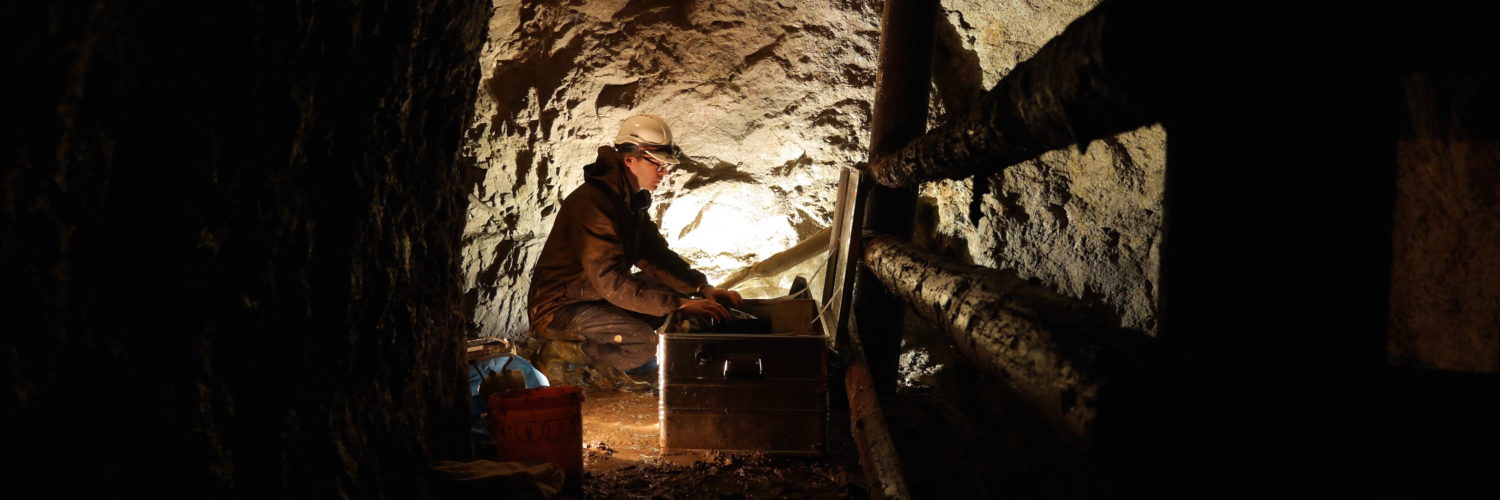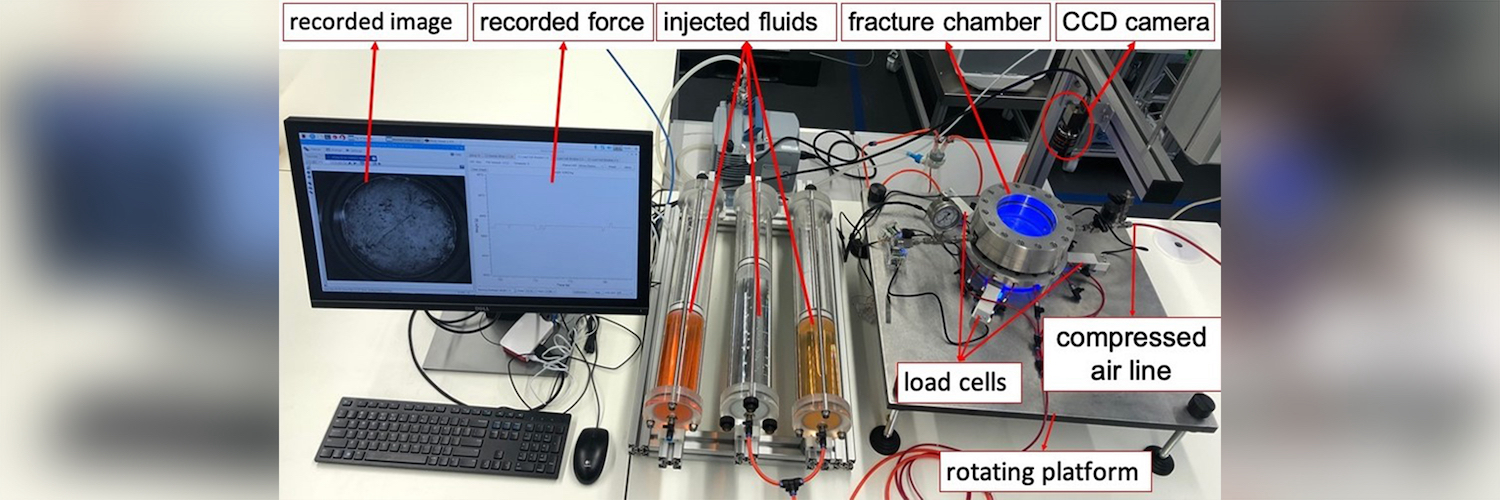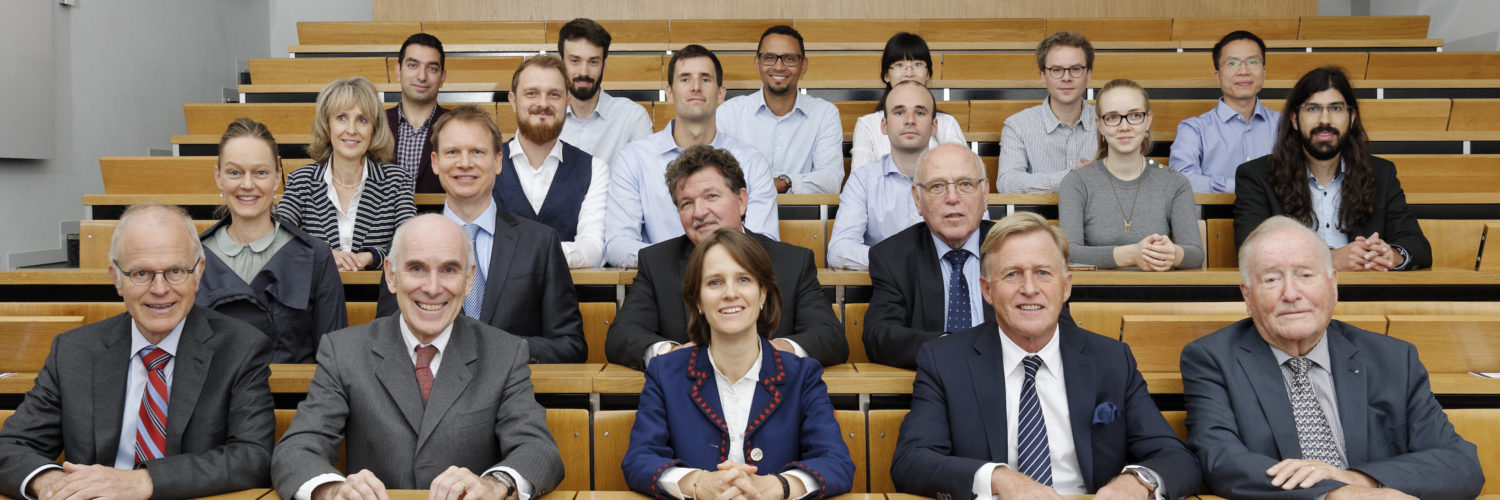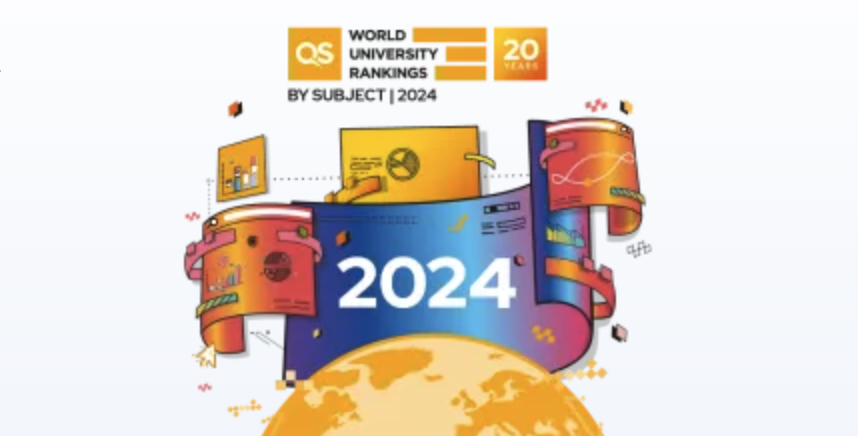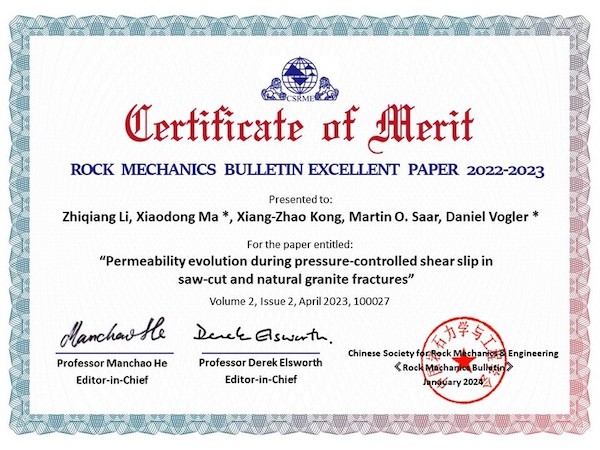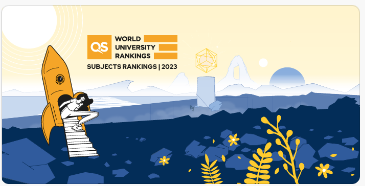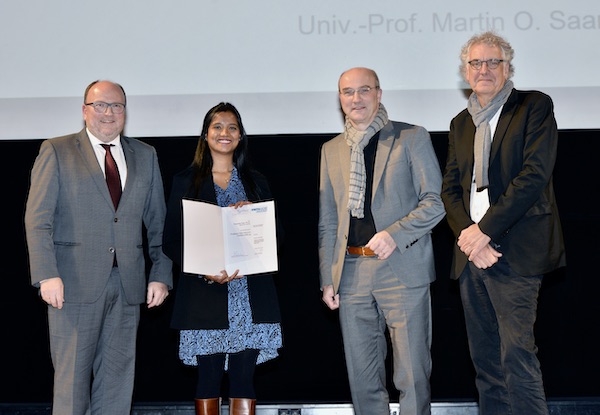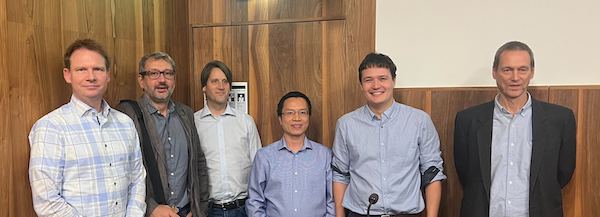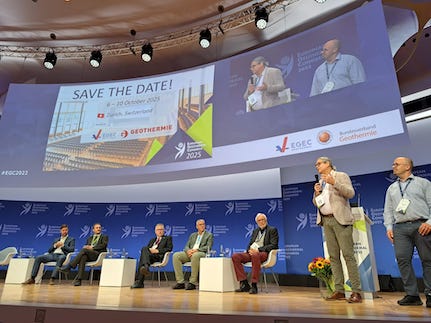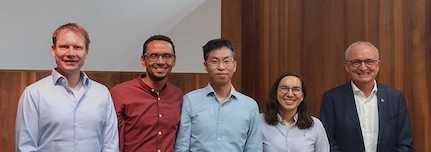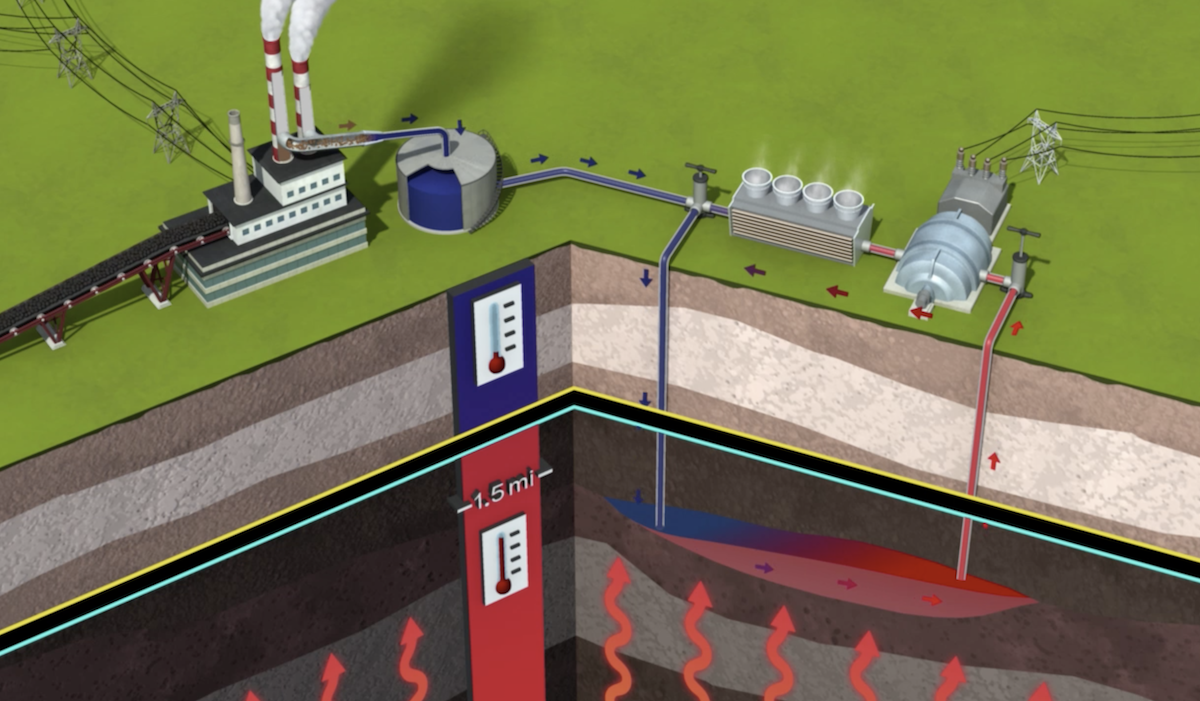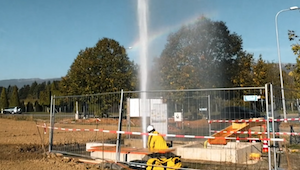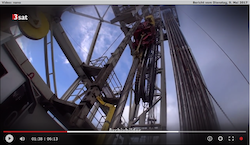Mission Statement
The Geothermal Energy & Geofluids group is endowed by the Werner Siemens Foundation and investigates reactive fluid (water, CO2, CxHy, N2) and (geothermal) energy (heat, pressure) transfer in the Earth’s crust employing computer simulations, laboratory experiments and field analyses to gain fundamental insights and to address a wide range of societal goals and concerns. ➞ Read More
GEG News
June 2024
Postdoctoral / Reservoir Engineer position: THM-coupled reservoir modeling
06.05.2024
Doctoral Examination Mohamed Ezzat
On May 6, 2024, Mohamed Ezzat has successfully defended his PhD thesis, entitled: “Numerical and Experimental Investigation of the Plasma-Pulse Geo-Drilling Technology“.
A GEG paper receives the Rock Mechanics Bulletin Excellent Paper 2022-2023 Award. The paper is:
Li, Z., X. Ma, X.-Z. Kong, M.O. Saar, and D. Vogler, Permeability evolution during pressure-controlled shear slip in saw-cut and natural granite fractures, Rock Mechanics Bulletin, 2023. https://doi.org/10.1016/j.rockmb.2022.100027 [Download] [View Abstract]Fluid injection into rock masses is involved during various subsurface engineering applications. However, elevated fluid pressure, induced by injection, can trigger shear slip(s) of pre-existing natural fractures, resulting in changes of the rock mass permeability and thus injectivity. However, the mechanism of slip-induced permeability variation, particularly when subjected to multiple slips, is still not fully understood. In this study, we performed laboratory experiments to investigate the fracture permeability evolution induced by shear slip in both saw-cut and natural fractures with rough surfaces. Our experiments show that compared to saw-cut fractures, natural fractures show much small effective stress when the slips induced by triggering fluid pressures, likely due to the much rougher surface of the natural fractures. For natural fractures, we observed that a critical shear displacement value in the relationship between permeability and accumulative shear displacement: the permeability of natural fractures initially increases, followed by a permeability decrease after the accumulative shear displacement reaches a critical shear displacement value. For the saw-cut fractures, there is no consistent change in the measured permeability versus the accumulative shear displacement, but the first slip event often induces the largest shear displacement and associated permeability changes. The produced gouge material suggests that rock surface damage occurs during multiple slips, although, unfortunately, our experiments did not allow quantitatively continuous monitoring of fracture surface property changes. Thus, we attribute the slip-induced permeability evolution to the interplay between permeability reductions, due to damages of fracture asperities, and permeability enhancements, caused by shear dilation, depending on the scale of the shear displacement.
10.03.2023
Doctoral Examination Batmagnai Erdenechimeg

On March 3, 2023, Batmagnai Erdenechimeg has successfully defended his PhD thesis, entitled: “Magnetotelluric exploration of intermediate temperature geothermal systems and mineral resources in central Mongolia”.
December 2022, RWTH Aachen
Dr. Paromita Deb has been given the Dr. Karl-Heinrich Heitfeld Award for the best doctoral thesis in the Division of Earth Sciences and Geography.
Read more – link to RWTH Aachen
Dr. Paromita Deb has been given the Dr. Karl-Heinrich Heitfeld Award for the best doctoral thesis in the Division of Earth Sciences and Geography.
Read more – link to RWTH Aachen
On October 28, 2022, Isamu Naets has successfully defended his PhD thesis, entitled: “A pore scale investigation of fluid flow heterogeneity and solute transport in rough-walled fractures”.
The biggest geothermal event in Europe has ended. More than 1300 participants attended EGC2022. The next EGC2025 will be held in Zurich, from 6 to 10 October 2025, organized by Geothermie Schweiz and co-organized by ETH Zurich.
On September 16th, 2022, Po-Wei Huang has successfully defended his PhD thesis, entitled: “Reactive transport modeling at the pore scale and upscaling to the Darcy scale”.
GEG Events
23.07.2024 14:00-15:00
Modelling of Flow and Transport in Multiscale Digital RocksChaozhong Qin (GEG group presentation)
GEG Meetings, ETH Zurich
NEXT EVENT
13.08.2024 14:00-15:00
Fast Marching Method: A New Paradigm for Modelling Unconventional Reservoirs and Enhanced Geothermal Systems.Akhil DATTA-GUPTA (GEG group presentation)
GEG Meetings, ETH Zurich
26.11.2024 14:00-15:00
ReaktFit: the parameter fitting tool for Reaktoro (current status in development)Newest GEG Papers
Refereed journal papers accepted the last 6 months
Underlined names are links to current or past GEG members
Paving the way for CO2-Plume Geothermal (CPG) systems: A perspective on the CO2 surface equipment
Schifflechner, C., J. de Reus, S. Schuster, A. Corpancho Villasana, D. Brillert, M.O. Saar, and H. Spliethoff, Energy, 305, 2024. https://doi.org/10.1016/j.energy.2024.132258 [Download] [View Abstract]Subsurface reservoirs play an important role in decarbonizing the energy sector, be it through geothermal energy production or carbon capture and storage. In recent years, there has been an increasing interest in CO2-Plume Geothermal systems, which combine carbon sequestration with geothermal, using CO2 instead
of water as a subsurface heat and pressure energy carrier. Since CO2-Plume Geothermal systems are added to full-scale CO2 Capture and Sequestration operations, all of the initially injected CO2 is ultimately stored. CO2-Plume Geothermal, therefore constitutes of both CO2 Capture Utilization as well as Storage. This paper assesses the huge technical potential of this technology, identifying a potentially highly relevant market for CO2 equipment manufacturers and discusses the current research demand, based on the current state of the art of CO2 equipment. Both temperature and pressure levels are significantly lower than CO2 turbine designs investigated and proposed so far for other applications, such as waste heat recovery. For a depth of 5 km, a typical one-stage radial turbine design might have a rotational speed of 23’000 rpm to 42’000 rpm and an impeller diameter between 96 mm to 155 mm. Together with technology-specific requirements, due to produced fluid impurities, it becomes evident that significant further development efforts are still necessary. (Paper accepted 2204-06-28) Investigation of the filling of a pore body with a nonwetting fluid: a modeling approach and Computational Fluid Dynamics analysis
Salama, A, J Kou, S Sun, and M Hefny, Transport in Porous Media , 2024. https://doi.org/10.1007/s11242-024-02114-8 [Download] [View Abstract]Understanding the dynamics of the filling process of a pore body with a nonwetting fluid is important in the context of dynamic pore network models (PNM) and others. It can justify many of the assumptions behind the different rules that describe how the network behaves during imbibition and drainage processes. It also provides insight into the different regimes pertinent to this system. The filling process starts with the contact line pinning at the pore entrance. Three regimes can be identified during the filling process that is related to how the contact line advances. In the first two regimes, the contact line pins at the pore entrance while the emerging droplet develops, and in the third one, the contact line departs the entrance of the pore and advances along the pore surface. During the first regime, which is brief, the curvature of the meniscus increases, and likewise, the corresponding capillary pressure, while in the other two regimes, the curvature decreases and so does the capillary pressure. Such behavior results in the rate at which the nonwetting fluid invades the pore to change. It initially decreases, then increases as the meniscus advances. The radius of curvature of the meniscus, eventually, increases to infinity for which the interface assumes a flat configuration. A one-dimensional modeling approach is developed that accounts for all these regimes. The model also considers the two immiscible fluids over a wide spectrum of contrast in viscosity. Information about the mean velocity of the invading fluid, the location of the contact line, the radius of curvature of the meniscus, the volume of the emerging droplet, and several others are among the details that the model provides. A computational fluid dynamics (CFD) simulations have also been considered to confirm the proposed fates of the interface and to provide a framework for comparisons. The results of the validation process show, generally, a very good match between the model and the CFD analysis. (Paper accepted 2024-07-25) Paving the way for CO2-Plume Geothermal (CPG) systems: A perspective on the CO2 surface equipment
Schifflechner, C., A.J. de Reus, S. Schuster, A.C. Villasana, D. Brillert, M.O. Saar, and H. Spliethoff, Energy, 305, 2024. https://doi.org/10.1016/j.energy.2024.132258 [Download] [View Abstract]Subsurface reservoirs play an important role in decarbonizing the energy sector, be it through geothermal energy production or carbon capture and storage. In recent years, there has been an increasing interest in CO2-Plume Geothermal systems, which combine carbon sequestration with geothermal, using CO2 instead of water as a subsurface heat and pressure energy carrier. Since CO2-Plume Geothermal systems are added to full-scale CO2 Capture and Sequestration operations, all of the initially injected CO2 is ultimately stored. CO2-Plume Geothermal, therefore constitutes of both CO2 Capture Utilization as well as Storage. This paper assesses the huge technical potential of this technology, identifying a potentially highly relevant market for CO2 equipment manufacturers and discusses the current research demand, based on the current state of the art of CO2 equipment. Both temperature and pressure levels are significantly lower than CO2 turbine designs investigated and proposed so far for other applications, such as waste heat recovery. For a depth of 5 km, a typical one-stage radial turbine design might have a rotational speed of 23’000 rpm to 42’000 rpm and an impeller diameter between 96 mm to 155 mm. Together with technology-specific requirements, due to produced fluid impurities, it becomes evident that significant further development efforts are still necessary. (Paper accepted 2024-06-30) Advancing Fractured Geothermal System Modelling with Artificial Neural Network and Bidirectional Gated Recurrent Unit
Li, Y., G. Peng, T. Du, L. Jiang, and X.-Z. Kong, Applied Energy, 372, 2024. https://doi.org/10.1016/j.apenergy.2024.123826 [Download] [View Abstract]Geothermal energy plays a pivotal role in the global energy transition towards carbon-neutrality, providing a sustainable, renewable, and abundant source of clean energy in the fight against climate change. Despite advancements, the optimal engineering of geothermal systems and energy extraction remains challenging, particularly in accurately predicting production temperatures. Here, we present an innovative numerical approach using a hybrid neural network that merges Artificial Neural Network (ANN) and Bidirectional Gated Recurrent Unit (BiGRU). With this hybrid network, we comprehensively assess 22 influential factors, including construction parameters, physical parameters, and well layout, which influence thermal breakthrough time and production temperature across varying fracture density. While the ANN captures the nonlinear interplay between static constraints and thermal breakthrough time, the BiGRU adeptly handles the temporal intricacies of production temperature. We examine the impact of ANN parameters on model performance, in comparison with conventional temporal models like Recurrent Neural Network (RNN), Long Short-Term Memory (LSTM), Gate Recurrent Unit (GRU), and BiGRU. Our findings reveal that augmenting hidden layers and neurons in ANN enhances its capacity to model intricate nonlinear processes, albeit with a risk of overfitting. Notably, the relu activation function emerges as optimal for managing nonlinear processes, while BiGRU excels over RNN, GRU, and LSTM models in forecasting production temperature of fractured geothermal systems, owing to its ability to extract implicit information from time series across historical and future trajectories. Crucially, the prediction uncertainty, measured by Root Mean Square Error (RMSE) and Mean Absolute Error (MAE), remains within 0.15, underscoring the precision and efficacy of our hybrid approach in forecasting geothermal energy extraction. This study presents a significant stride towards a high-precision and efficient predictive framework crucial for advancing geothermal energy extraction in the broader context of renewable energy transition endeavors. (Paper accepted 2024-06-29) Physics-Informed Convolutional Decoder (PICD): A novel approach for direct inversion of heterogeneous subsurface flow
Wang, N., X.-Z. Kong, and D. Zhang, Geophysical Research Letter, 2024. https://doi.org/10.1029/2024GL108163 [Download] [View Abstract]We propose a physics-informed convolutional decoder (PICD) framework for inverse modeling of heterogenous groundwater flow. PICD stands out as a direct inversion method, eliminating the need for repeated forward model simulations. The framework combines data-driven and physics-driven approaches by integrating monitoring data and domain knowledge into the inversion process. PICD utilizes a convolutional decoder to effectively approximate the spatial distribution of hydraulic heads, while Karhunen–Loeve expansion (KLE) is employed to parameterize hydraulic conductivities. During the training process, the stochastic vector in KLE and the parameters of the convolutional decoder are adjusted simultaneously to minimize the data-mismatch and the physical violation. The final optimized stochastic vectors correspond to the estimation of hydraulic conductivities, and the trained convolutional decoder can predict the evolution and distribution of hydraulic heads. Various scenarios of groundwater flow are examined and results demonstrate the framework's capability to accurately estimate heterogeneous hydraulic conductivities and to deliver satisfactory predictions of hydraulic heads, even with sparse measurements. (Paper accepted 2024-04-22) Demonstration of a successful soft chemical stimulation in a geothermal sandstone reservoir in Mezobereny (Hungary)
Brehme, M., A. Marko, M. Osvald, G. Zimmermann, W. Weinzierl, S. Aldaz, S. Thiem, and E. Huenges, Geothermics, 120, 2024. https://doi.org//10.1016/j.geothermics.2024.102980 [Download] [View Abstract]Geothermal energy projects often lack sufficient permeability for a sustainable operation. If natural permeability is low, it can be enhanced by stimulation treatments. These can be of thermal, hydraulic or chemical nature. The challenge is to stimulate the reservoir successfully and at the same time to do it in an environmentally safe way. This is called soft stimulation and was extensively tested in the context of the EU-Horizon2020 DESTRESS project at several geothermal sites worldwide. This paper describes the successful thermal and chemical stimulation of a geothermal doublet in Mezobereny (Hungary), targeting a sandstone reservoir at 2000 m depth. A geothermal system was constructed in 2011–2012 aimed at exploiting the geothermal potential in the Bekes Basin for a district heating system. The system with one production well and one reinjection well faced a severe injectivity drop during a 3-week operational period at the end of 2012, so that the operation had to be stopped. Historical data analysis, well logging, sampling and eventually a tailored stimulation program was designed in a ‘soft’ manner, according to standards developed in the DESTRESS project. The stimulation successfully increased the injectivity by 4 – 10 times, so that the system is ready to go into operation again. (Paper accepted 2024-02-28)
